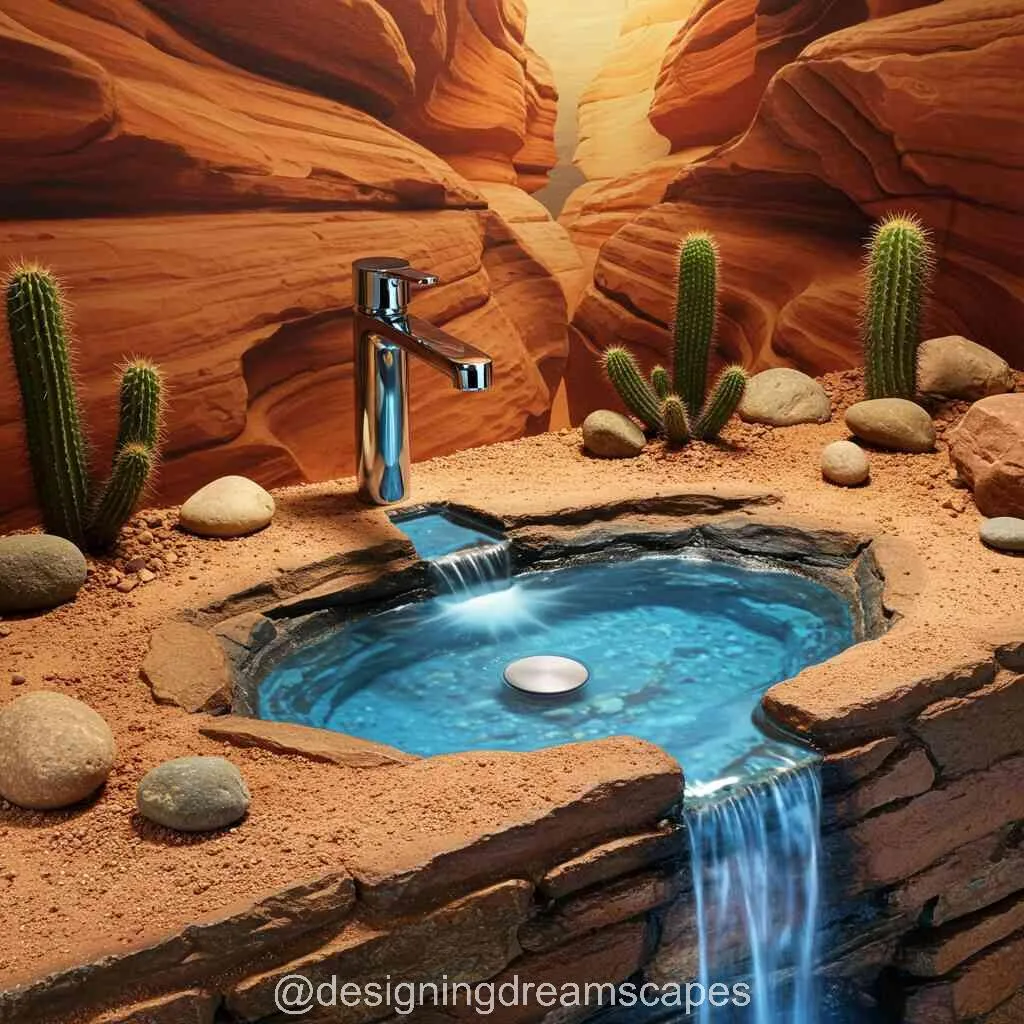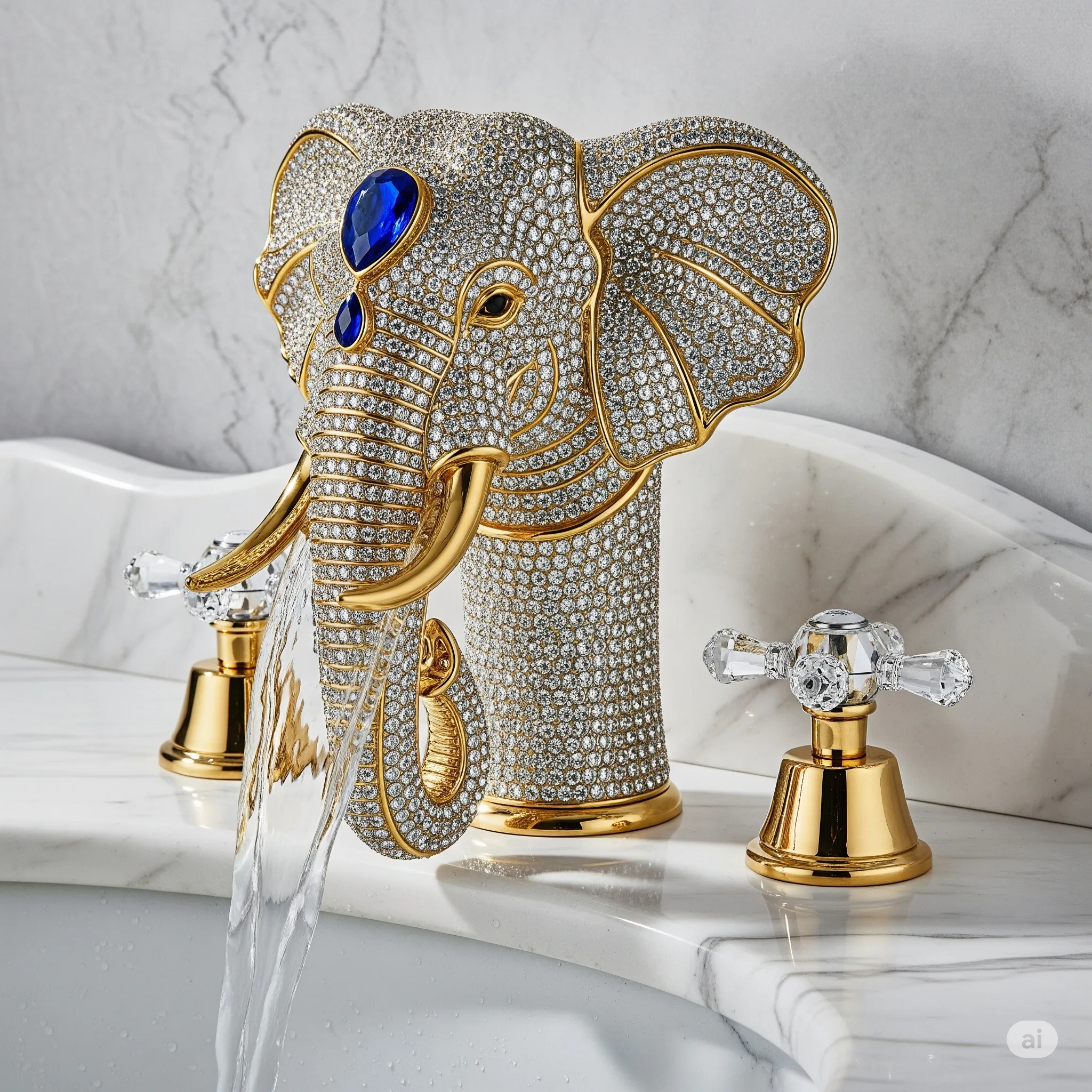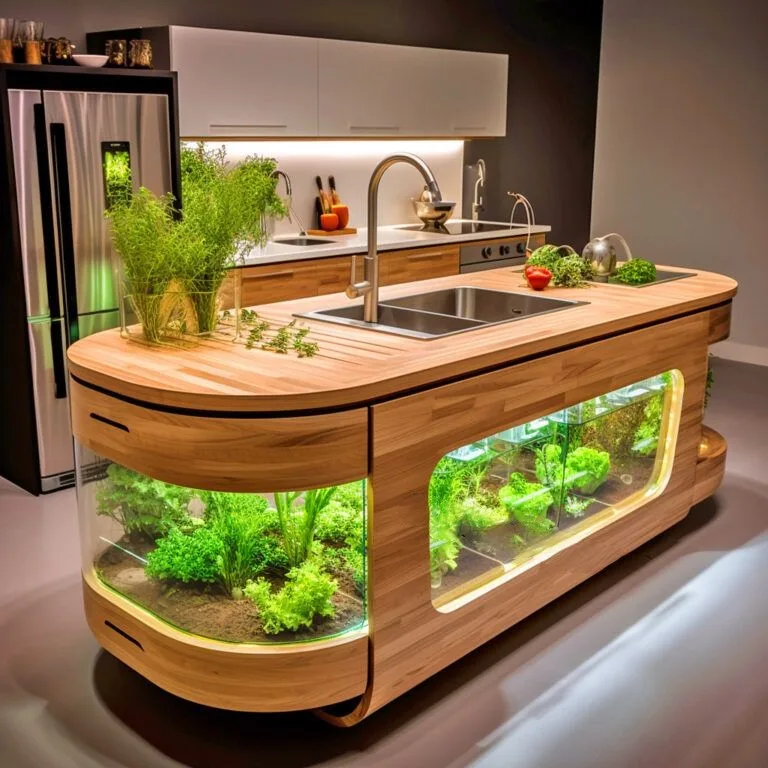Contents
Reimagining the Sink as a Work of Natural Art
In interior design, few elements are as unexpectedly captivating as the nature-inspired sink. Far beyond mere bathroom or kitchen utility, these sinks celebrate organic materials, flowing forms, and a deep reverence for the outdoors. Gorgeous nature sinks turn an everyday fixture into a functional sculpture—one that evokes the calm of forest streams, the solidity of carved stone, or the gentle bloom of petals and leaves.
As homeowners and designers seek to bring more of the outside world indoors, nature sinks have emerged as a standout element. They reflect an evolution in thinking: that even the most utilitarian part of a space can become a sensory experience. With designs that replicate everything from rivers and tree trunks to flower basins and fossil textures, these sinks aren’t just eye-catching—they’re immersive.
This article explores the appeal, materials, variations, and psychological effects of nature sinks. We’ll also look at how they integrate with various design styles and where they fit best in modern homes.

The Natural Evolution of Sink Design
Aesthetic Appeal Rooted in Nature
What distinguishes nature sinks from their conventional counterparts is their commitment to organic beauty. They don’t hide the veins in marble, the knots in wood, or the irregularities in rock. Instead, these natural characteristics are celebrated—highlighted, even—as signs of authenticity and individuality.
Design inspiration includes:
- Flowing riverbeds carved into stone basins
- Petrified wood slices with their fossilized textures
- Leaf-shaped or floral bowl sinks
- Live-edge wood slabs with integrated sink troughs
- Basins resembling lotus flowers, mushrooms, or seashells
These shapes and textures transform the act of washing hands or brushing teeth into a sensory ritual. The user interacts with nature through touch, sight, and movement.
Material Choices That Echo the Earth
A hallmark of gorgeous nature sinks is their use of raw, minimally processed materials. Popular options include:
- Natural stone: Granite, marble, travertine, onyx, and basalt offer striking patterns and strong durability.
- Petrified wood: A fossilized version of timber that blends the warmth of wood with the strength of stone.
- Reclaimed wood: Often sealed and treated, this brings a rustic charm and eco-conscious appeal.
- Copper and bronze: Hammered and patina-finished metals evoke aged beauty and a nod to artisan traditions.
- Glass and resin composites: Used to mimic river flows, embedded pebbles, or translucent leaf veins.
Some high-end designs combine multiple materials, like stone and copper, or embed dried flowers, moss, or stones within resin to create immersive effects.
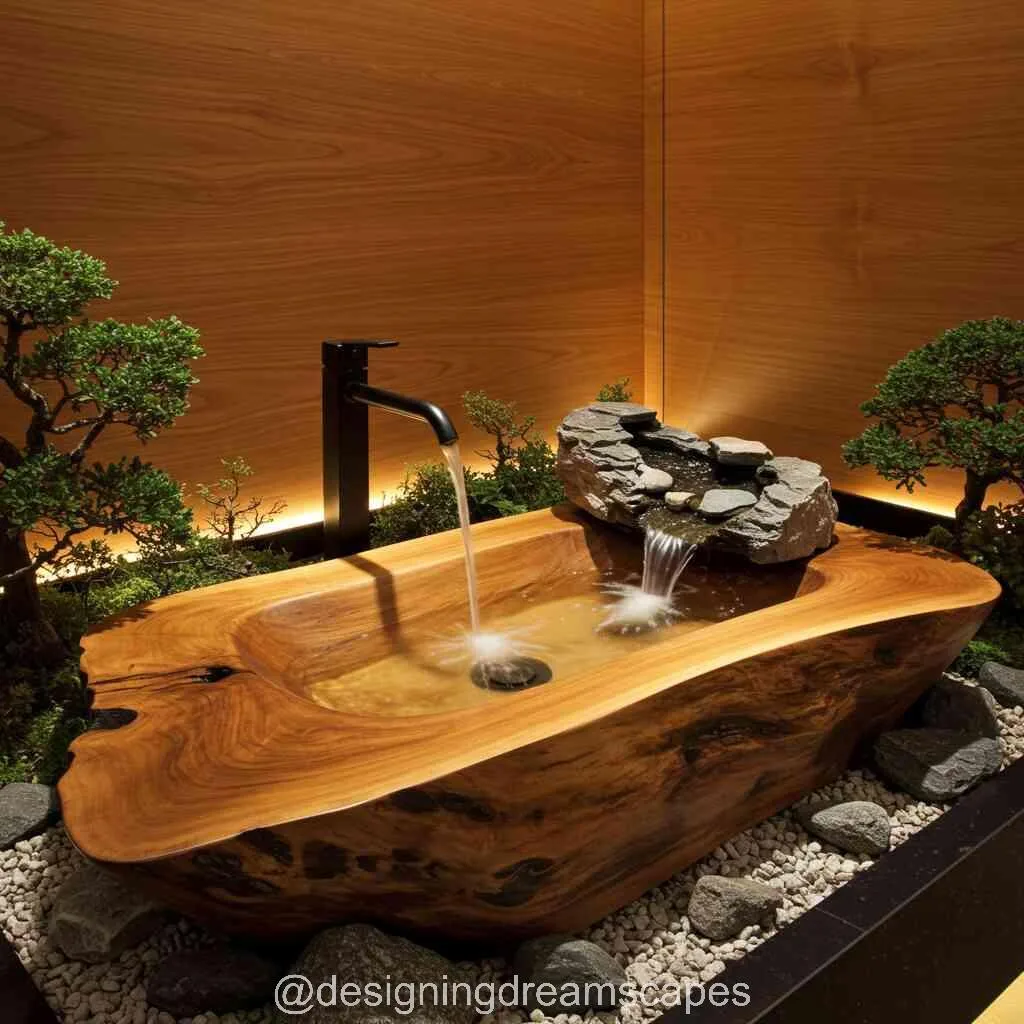
Design Styles and Integration
Nature sinks fit within a wide spectrum of design styles, thanks to their adaptability and craftsmanship.
- Rustic and log cabin homes: Pair perfectly with stone or petrified wood sinks on thick timber vanities.
- Boho and eclectic interiors: Benefit from floral or asymmetrical basins, especially those in hand-blown glass or artisanal ceramics.
- Modern organic spaces: Use minimalist designs in travertine or basalt for quiet elegance.
- Zen or spa-inspired bathrooms: Incorporate smooth river stone or pebble-filled glass sinks that echo tranquility.
- Tropical or coastal homes: Often use seashell-shaped sinks or polished driftwood paired with turquoise accents.
Lighting, mirrors, and faucet styles are often chosen to complement these natural textures, from waterfall faucets to bronze fixtures with leaf motifs.
Artisan Craftsmanship and Unique Forms
Each nature sink is often a one-of-a-kind creation. Artisans hand-carve stone or work with live-edge wood, allowing the unique grain or natural curves to dictate the final shape. This level of craftsmanship creates a deeply personal product, where no two pieces are identical.
Some standout artistic approaches include:
- River sink inlays, where resin and stones form a simulated flowing stream through a wood slab
- Basin sinks carved from boulders, where the natural shape is preserved
- Fossil-embedded sinks, showcasing ancient shells or imprints in stone
- Floral mosaic basins, where petals and vines are created from tiles or stained glass
These artistic sinks become focal points in a room, sparking conversation and admiration.
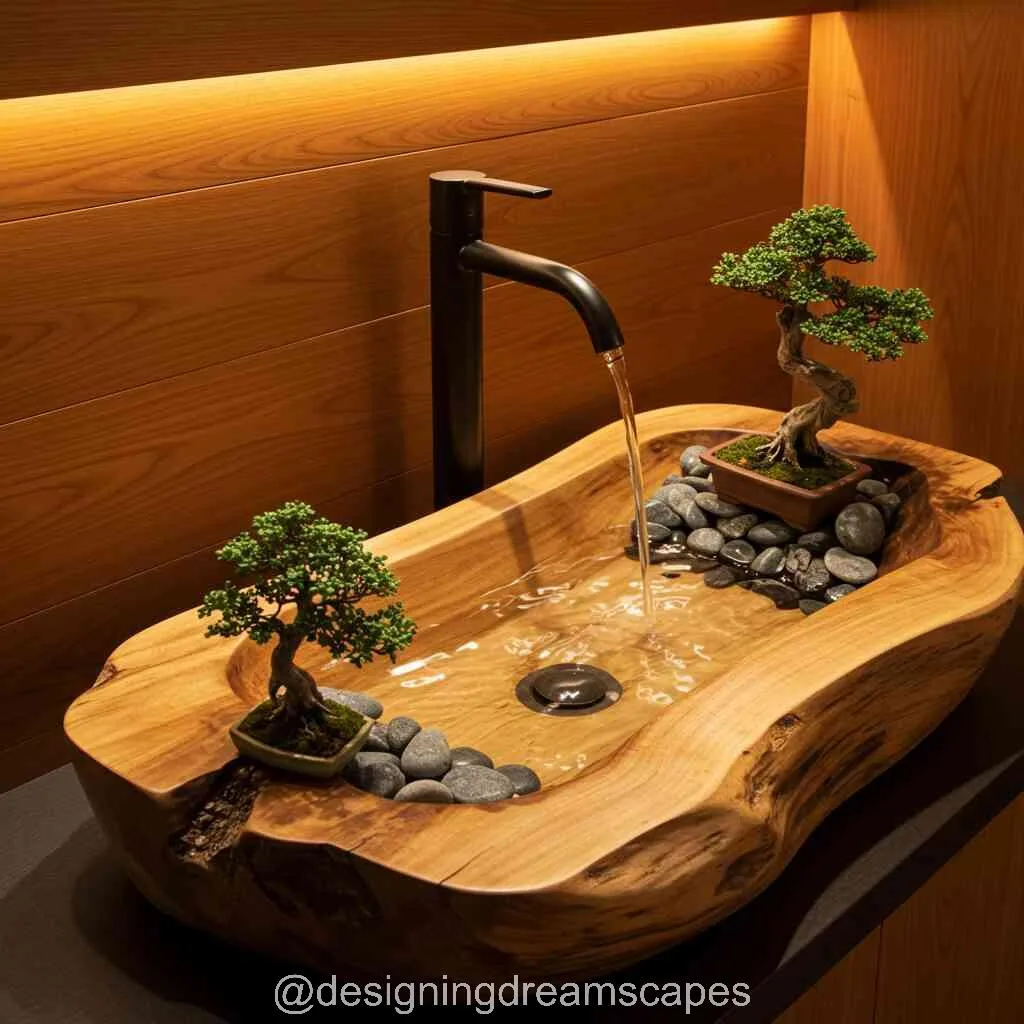
The Psychological and Emotional Benefits
Nature sinks do more than appeal to the eye—they impact how we feel. Integrating natural elements in daily-use fixtures supports a wellness-forward home environment.
- Biophilic design, which connects people with nature, has been shown to reduce stress and promote relaxation.
- Textured materials like wood and stone offer tactile satisfaction and visual grounding.
- The organic irregularities in these sinks counterbalance the sterile lines of modern interiors, adding warmth and softness.
- Using a sink shaped like a flower or carved from a tree root reinforces a daily connection to the natural world, fostering mindfulness in even the most routine moments.
Sustainability and Eco-Friendly Impact
A growing number of designers are turning to sustainable practices in producing nature sinks. This includes:
- Reclaimed and repurposed materials, like salvaged wood or old stone from construction sites
- Low-impact stone quarrying
- Water-based sealants free from volatile organic compounds (VOCs)
- Locally sourced materials to reduce carbon footprint
Some companies even partner with environmental organizations to plant trees or offset carbon emissions with every sink sold.
Ideal Spaces for Nature Sinks
Nature sinks aren’t limited to residential bathrooms or kitchens. They’re also gaining popularity in:
- Spa resorts and wellness retreats, where they enhance a natural ambiance
- Boutique hotels, as part of themed rooms or eco-conscious design
- Artist studios or galleries, functioning as usable sculptures
- Garden rooms or greenhouses, especially those with integrated irrigation systems
- Luxury RVs or cabins, where compact, artisanal sinks add character
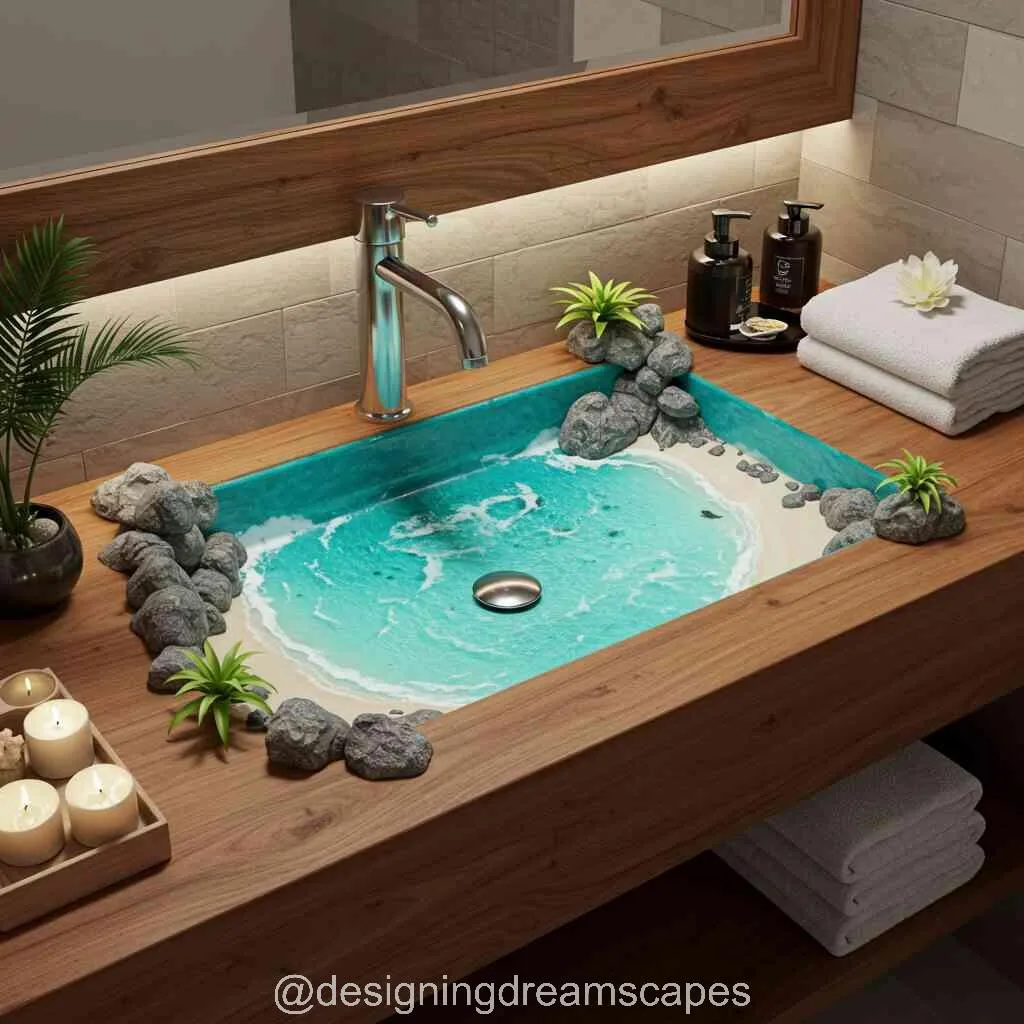
In each setting, they serve as a tactile reminder that function need not compromise beauty.
Pairing Fixtures and Accents
To complete the look, nature sinks are often paired with:
- Live plant arrangements, like ferns, succulents, or moss walls
- Natural stone countertops or bamboo cabinetry
- Ambient lighting, often warm and diffused to complement textures
- Handcrafted mirrors, framed with driftwood or ironwork
The total effect is a space that feels rooted, serene, and utterly unique.
A Celebration of Nature Through Everyday Ritual
Gorgeous nature sinks are more than just plumbing fixtures—they’re a fusion of design, functionality, and reverence for the natural world. By bringing raw materials and organic forms into kitchens, bathrooms, and beyond, these sinks transform utilitarian spaces into sanctuaries of peace and beauty.
Whether you’re seeking a serene spa-like bathroom or a showstopping kitchen statement, a nature sink can center your space both visually and spiritually. These pieces remind us that even the most routine acts—washing our hands, brushing our teeth, rinsing a bowl—can be moments of connection to the earth.
In a world that’s increasingly digital and fast-paced, nature sinks invite us to slow down, ground ourselves, and remember the quiet strength and artistry of the natural world—one drop of water at a time.
